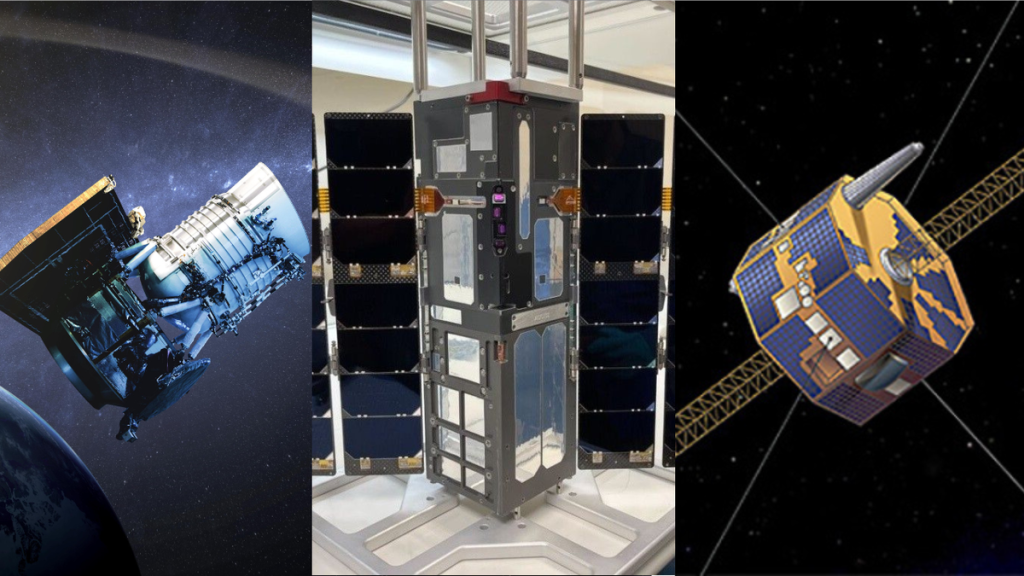The hulk of metal moved silently through space, high above the blue Earth. Power no longer coursed through its wires, its instruments were dead to the outside universe, and its communications antenna was silent. To all intents and purposes it was deceased, and almost everyone back home had given up on it.
Almost everyone.
Despite the last vestiges of its battery having been drained, suddenly, from somewhere, there was a spark of life. As a failsafe, its computer was tasked with rebooting the spacecraft once the battery was empty — there was always more energy to garner from its solar arrays. Suddenly, the small satellite‘s various sub-systems began waking up. The flight computer reactivated, reaction wheels began spinning, instruments began sensing and its radio antenna began broadcasting once more.
We were all jubilant! It was a miracle.”
— Xinlin Li, CIRBE lead investigator
CIRBE (Colorado Inner Radiation Belt Electron Experiment) was a 3-unit cubesat thatlaunched in April 2023 to monitor charged particles in the inner Van Allen radiation belt. It was so successful that NASA granted it an extension after its nominal 4-month mission ended, but on April 15 something happened to the little satellite as it circled 316 miles (509 kilometers) above our heads.
It went dark. And that, everybody thought, was that.
“We were all disappointed – we could only think positively that our high-energy resolution measurements had provided a lot of high-quality data,” Xinlin Li, CIRBE’s lead investigator at the University of Colorado at the time, told Space.com in an interview.
Then the May 2024 solar storms erupted from the sun, a torrent of charged particles slamming into the Earth’s magnetic field to generatean almighty geomagnetic storm and modify the Van Allen belts, which was just the kind of thing CIRBE had been designed to measure. And yet, CIRBE wasn’t around. As auroral lights shimmered across skies all over the world on the night of May 10, Li’s friends and colleagues ventured outside to view the celestial light show.
Breaking space news, the latest updates on rocket launches, skywatching events and more!
But not Li.
CIRBE rides again
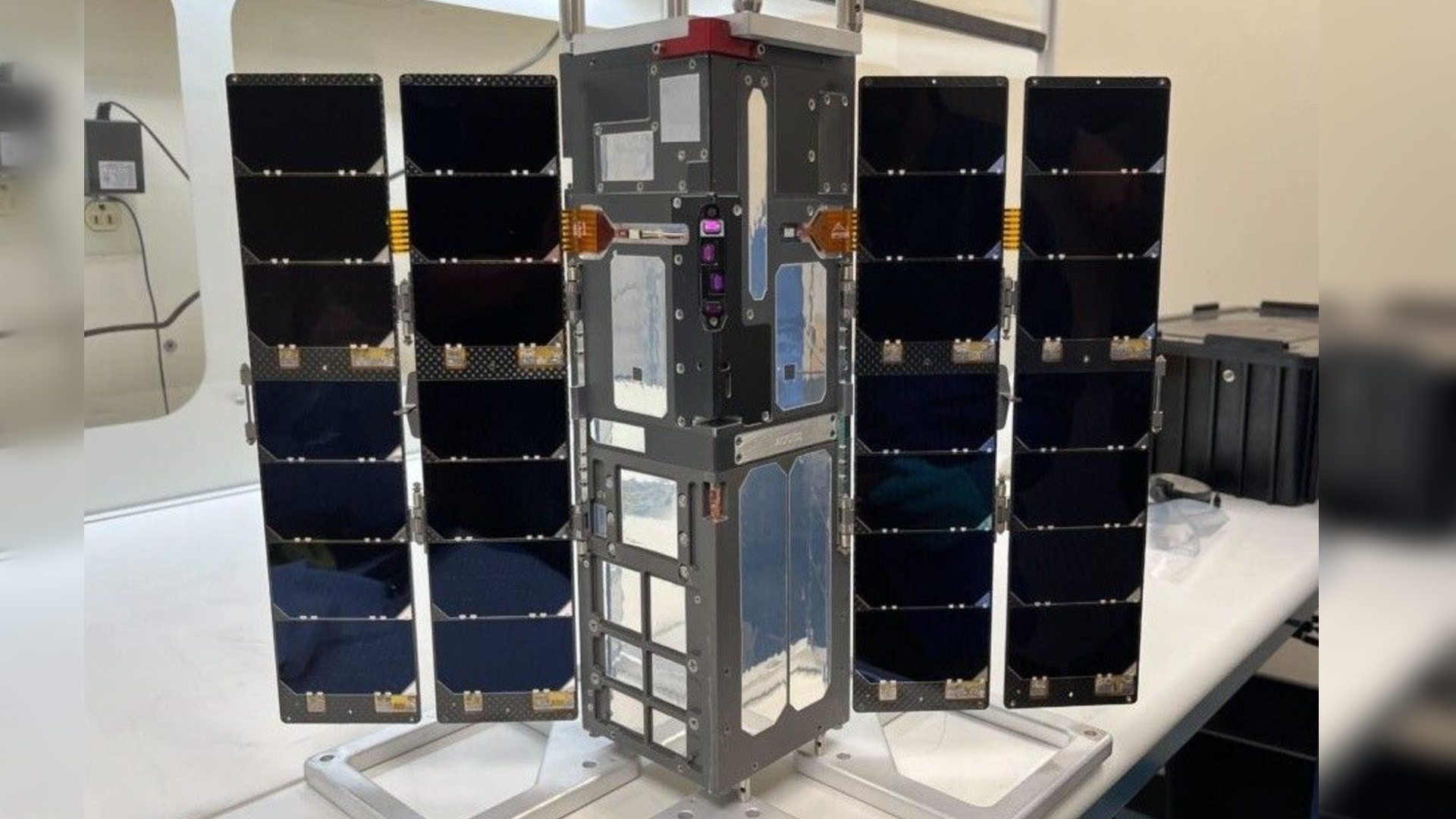
Knowing what they were missing from not having CIRBE around to monitor the storm’s effects, Li felt his spirits drop. “I just wasn’t in the mood to go and watch the aurora,” he said.
Instead, every day he checked the SatNog website that provided live satellite telemetry, willing CIRBE back to life. His hopes were not completely unfounded. CIRBE’s sister mission from the decade prior was CSSWE, the Colorado Student Space Weather Experiment. It launched in 2012 before falling silent on March 13, 2013 for three months before coming back to life. In the case of CSSWE, however, it was a known problem in its communication system that caused the radio blackout, and a built-in “Phoenix mode” allowed it to reboot once the battery had drained.
However, whatever ailment had afflicted CIRBE was, and still is, a mystery. Li’s best guess is that it was some kind of corruption in the spacecraft’s flash memory, and Li could only hope that the satellite would reboot. Then, on May 23, out of the blue Li saw a signal from CIRBE.
“It came back to life for two-and-a-half days before falling silent again,”Li said. “We still don’t know why.”
Li wasn’t giving up hope, and on June 10 CIRBE phoned home once more, and this time it was back to stay. Well, that is until its orbit decayed and it reentered the atmosphere on Oct. 4, burning up in a blaze of glory.
“We were all jubilant!” said Li of CIRBE’s return to active duty. “It was a miracle.”
Alas, the miracle could not last. The solar storms were heating Earth’s upper atmosphere, causing it to inflate and increase the atmospheric drag on the cubesat. This is what eventually spelled its doom — the very thing that CIRBE was sent up there to study.
“Every time we encountered an intense magnetic storm it was a bittersweet feeling,” said Li. “We observed dynamic features in the radiation belts and captured new phenomena, but at the same time we watched as CIRBE’s altitude dipped quickly during each storm.”
An ‘IMAGE’ to keep
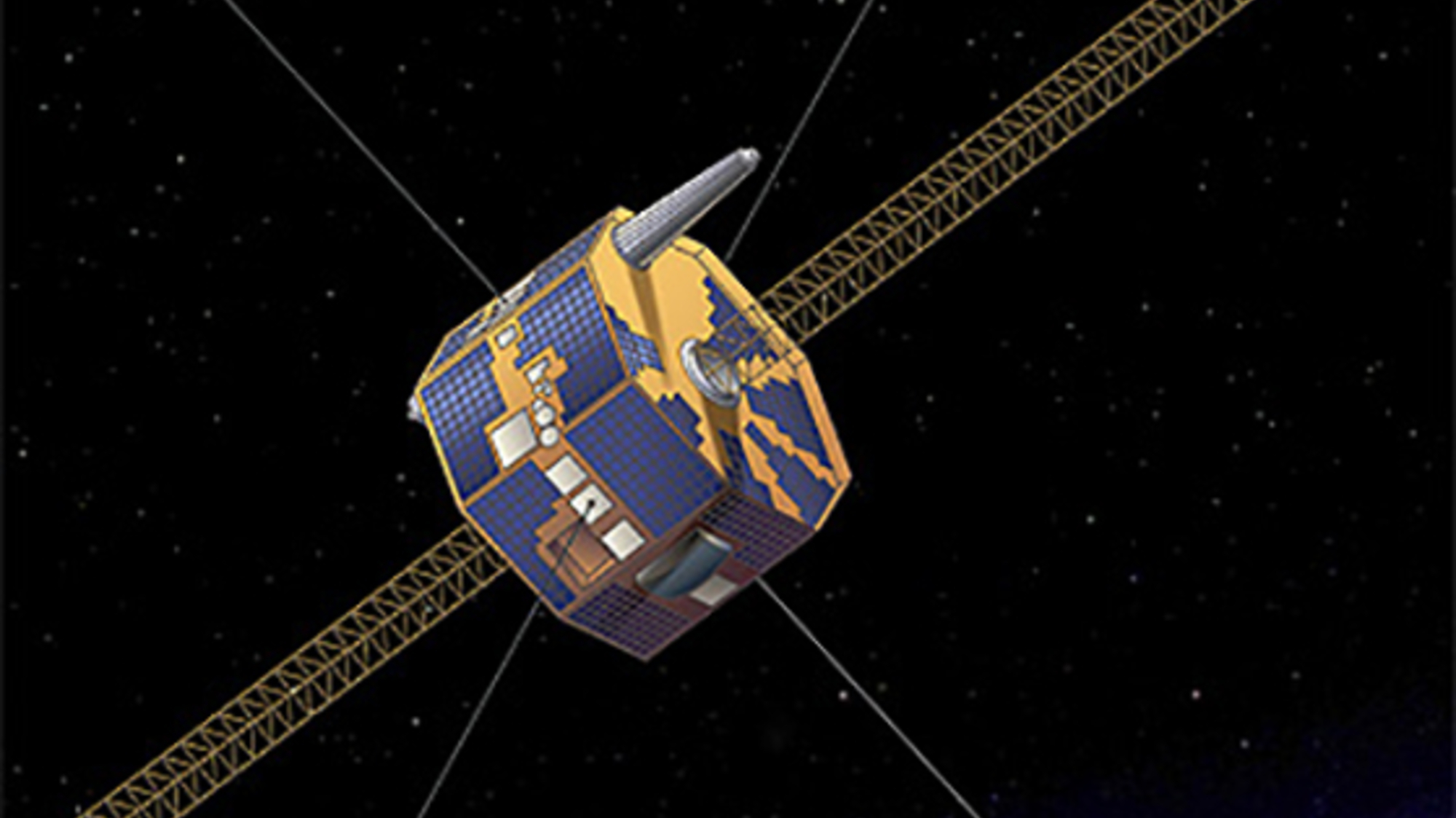
At least CIRBE came back from the dead quickly enough to discover two new and temporary radiation belts formed by an influx of charged particles from the solar storms, located in the “slot” region between the two Van Allen belts. Some missions have been known to spend years hovering between life and death before reactivating.
Take NASA’s Imager for Magnetopause-to-Aurora Global Exploration (IMAGE) spacecraft launched in 2000. Like CIRBE, IMAGE was designed to study the effect of solar storms on Earth’s magnetosphere. For five years it provided superb data until one day in December 2005, it just stopped.
With IMAGE presumed dead, its mission team moved onto other projects. Then many years later, in January 2018, something extraordinary happened: IMAGE came back.
Its signal was picked up purely by chance by amateur radio astronomer named Scott Tilley, who at the time was searching for a lost U.S. military satellite. He contacted Richard Burley, IMAGE’s mission director at NASA’s Goddard Space Flight Center, who was astounded by the news.
Burley and his team at NASA set about reestablishing contact to confirm that it was indeed IMAGE, and identified the signal code to be IMAGE’s ID of 166. Regaining control of the spacecraft, they discovered something remarkable: electronics that had been damaged in 2004 by a cosmic ray strike — or what Burley says NASA call a “Single Event Upset,” or SEU.
IMAGE’s power distribution unit, or PDU, had two sides, an A and a B side. “It was about IMAGE’s only redundant part,” Burley told Space.com.
The SEU knocked out the PDU’s A-side, forcing technicians to swap to its B-side. Yet when contact was re-established in 2018, the PDU was back onto its fully operational A-side. This could only have happened if IMAGE had rebooted its systems. As it turned out, it had been doing that a lot.
After close investigation, Burley and the IMAGE team were able to work out what had happened. The cosmic ray strike had damaged the PDU to the point that it began to think that power was still going to its radio transponder, when in actuality it was not. This is what caused the initial blackout back in 2005.
“Spacecraft have a ‘command watchdog timeout,'” Burley said. “This is designed into the computer so that if it receives no commands in a pre-programmed amount of time it will reboot the spacecraft’s computer.”
For IMAGE, this pre-programmed amount of time was 72 hours. However, the reboot doesn’t reset the PDU, so each time IMAGE rebooted it thought that its transponder was still working when it wasn’t.
Because it was’’t receiving any communications from Earth, where everybody thought IMAGE was dead, the spacecraft kept rebooting every 72 hours for 13 long years and not getting anywhere with it, like it was trapped in some kind of hellish purgatory, a spacecraft Groundhog Day.
Somewhere along the line, the PDU reset itself, switched itself back to its A-side in the process, and power started to flow once more to the transponder so that it could finally call home. In a way it was like the victim of a stroke losing the ability to move half their body or to speak, only to regain that ability much later.
Burley states that cosmic ray strikes on spacecraft are common events, and usually the on-board error detection and correction protocols can fix single bit errors, such as a 0 being flipped to a 1 or vice versa. “Multi-bit errors are more problematic,” said Burley, and that’s what had happened to IMAGE.
“It turns out that two other NASA Goddard spacecraft suffered similar anomalies in their SSPCs [solid state power controllers, which are part of their PDUs],” said Burley. Fortunately in the other two cases, the damage had not knocked out their transponders, so communication to diagnose and fix the resulting problems was still possible. All the affected SSPCs came from the same batch that was sufficiently radiation-hardened to protect against cosmic-ray strikes.
As for IMAGE, all that time alone in space had done it no favors. On Feb. 24, 2018, NASA lost contact with IMAGE again, and when it was picked up its signal was weak. This lasted until May 2018, when it began broadcasting loudly once more, but was not accepting all the commands sent via mission control. There were also problems finding the hardware to run computer programs written at the turn of the century that could allow greater control of the spacecraft and analyze its telemetry. The last time that IMAGE was heard from was Aug. 28, 2018.
The long sleep in space
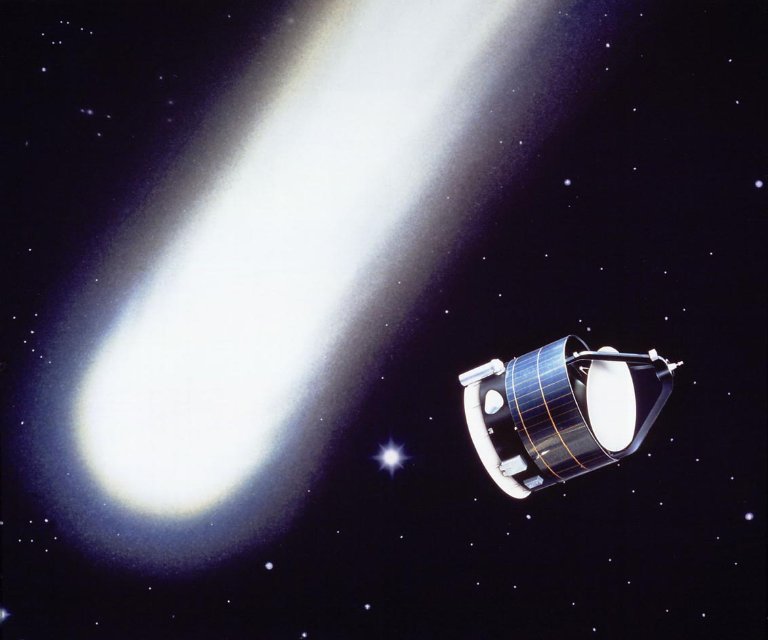
The examples of CIRBE and IMAGE are of unplanned switch-offs, but increasingly frequently spacecraft are being deliberately placed into hibernation. This is done mainly to conserve power and function during a long voyage — for example, the European Space Agency’s Jupiter Icy Moons Explorer will spend much of its eight-year voyage to Jupiter in hibernation, whereupon arrival it will be resurrected to study the giant planet’s frozen moons of Europa, Ganymede and Callisto.
The first ever spacecraft to be placed in hibernation was the European Space Agency’s Giotto mission. After its historic rendezvous with comet Halley in 1986, Giotto was switched off to save it for a planned rendezvous with another comet, called Grigg–Skjellerup. Giotto was reawakened on July 2, 1990 to fly past Earth and gain a gravitational slingshot to send it to the double-barreled comet, which it encountered on July 10, 1992. Thirteen days later, Giotto was switched off again, and was finally allowed to rest.
Staying WISE
Sometimes, spacecraft are deliberately but unexpectedly raised from the dead. Take NASA’s Wide-field Infrared Survey Explorer. Launched in 2009 to survey the entire sky in infrared light, it required coolant to keep its instruments cold and prevent thermal noise from the spacecraft drowning out the faint infrared photons that fell on its optics. When its coolant ran out in September 2010, NASA kept WISE going for a few months in a new guise — NEOWISE — to hunt for near-Earth objects (NEOs) that are visible at the warmer infrared wavelengths that didn’t require coolant for the spacecraft to detect them. NEOWISE was shut down in February 2011.
The Chelyabinsk airburst, caused when a small asteroid entered Earth’s atmosphere and exploded over a Russian city in February 2013, rattled many astronomers, space agencies and governments, and partly in response to this dramatic event, NASA reactivated NEOWISE in September 2013. NEOWISE subsequently spent 11 years successfully hunting down asteroids and comets, including 2020’s bright naked-eye comet C/2020 F3 NEOWISE.
NEOWISE finally ended its second tour of duty in August 2024 and was left to burn up in Earth’s atmosphere on Nov. 1, 2024.
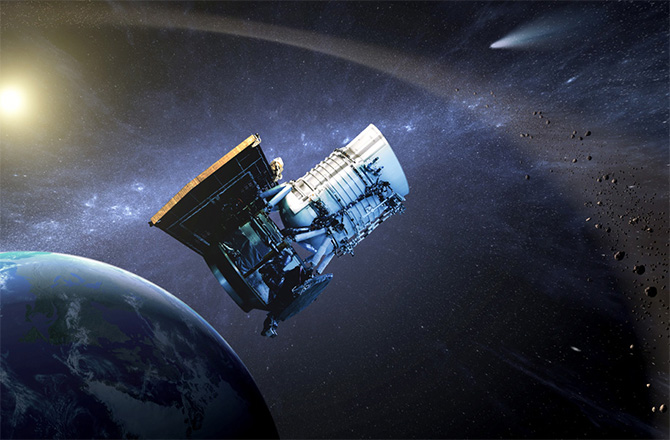
The tale of ISEE-3
Not all spacecraft awake from hibernation as successfully as NEOWISE or Giotto. All the way back in 1978 NASA launched the ISEE-3 spacecraft, subsequently renamed as the International Cometary Explorer. Its main claim to fame is being the first spacecraft to fly close to a comet, passing within 4,800 miles (7,800 km) of the nucleus of comet Giacobini–Zinner and passing through its plasma tail and taking readings in September 1985. It carried on through to 1997; NASA checked in on it again briefly in 1999 and 2008 before leaving it be.
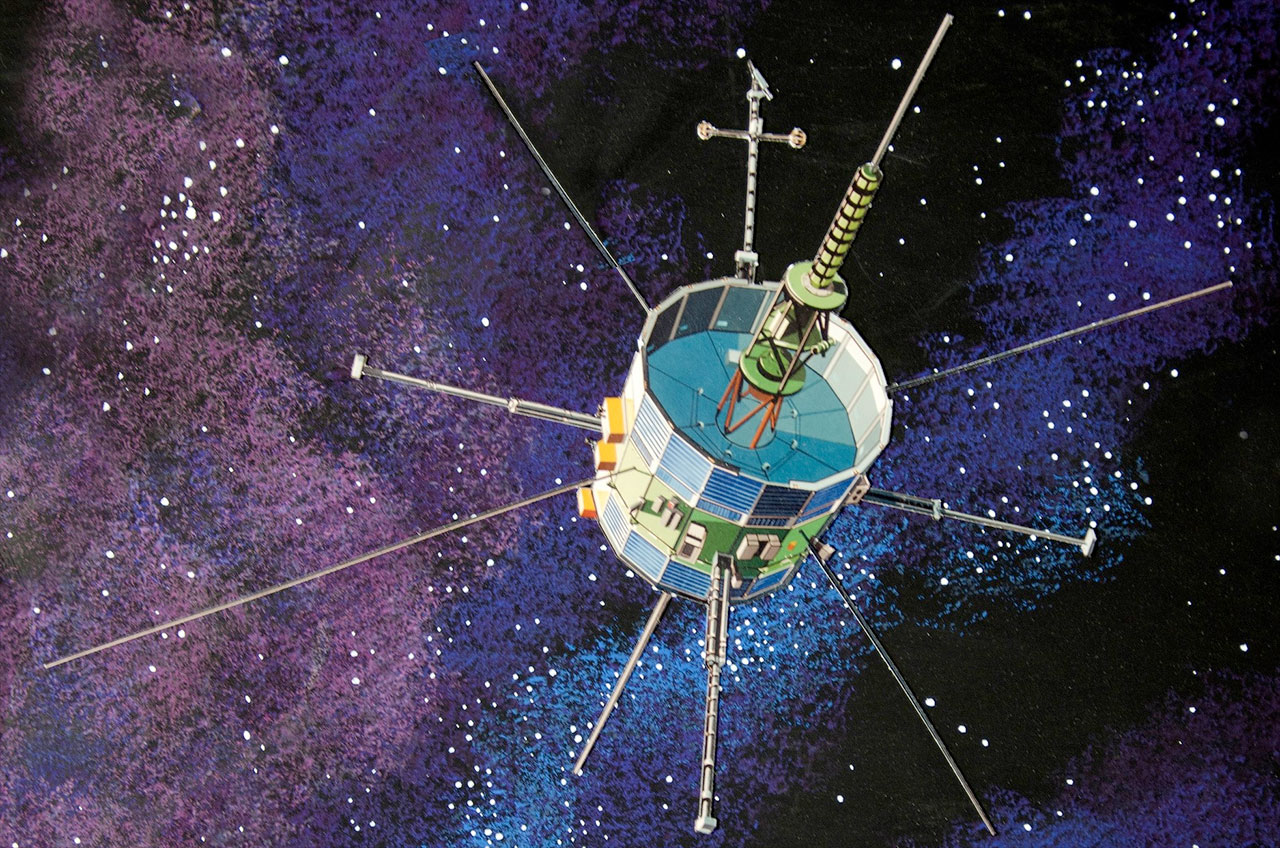
Then in 2014, an independent group of space enthusiasts were awarded permission by NASA to reactivate the spacecraft and, on May 29 that year they reestablished two-way communications with it. They managed to fire some of its thrusters, but soon enough those thruster firings began to fail as a result of falling nitrogen pressure in the on board fuel tanks. Final contact was on Sept. 16, 2014.
It was a good idea — if it had worked it might have opened the door to resuscitating other retired satellites, but it just goes to show that being a spacecraft necromancer is not an easy thing. And as CIRBE and IMAGE proved, sometimes it is the spacecraft itself that casts its own spells.



